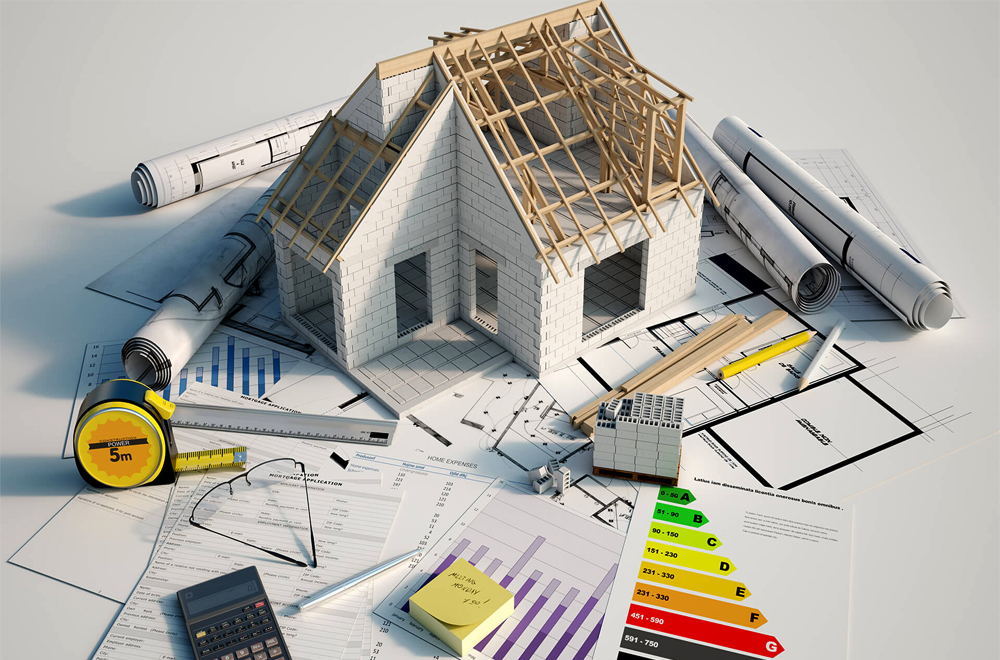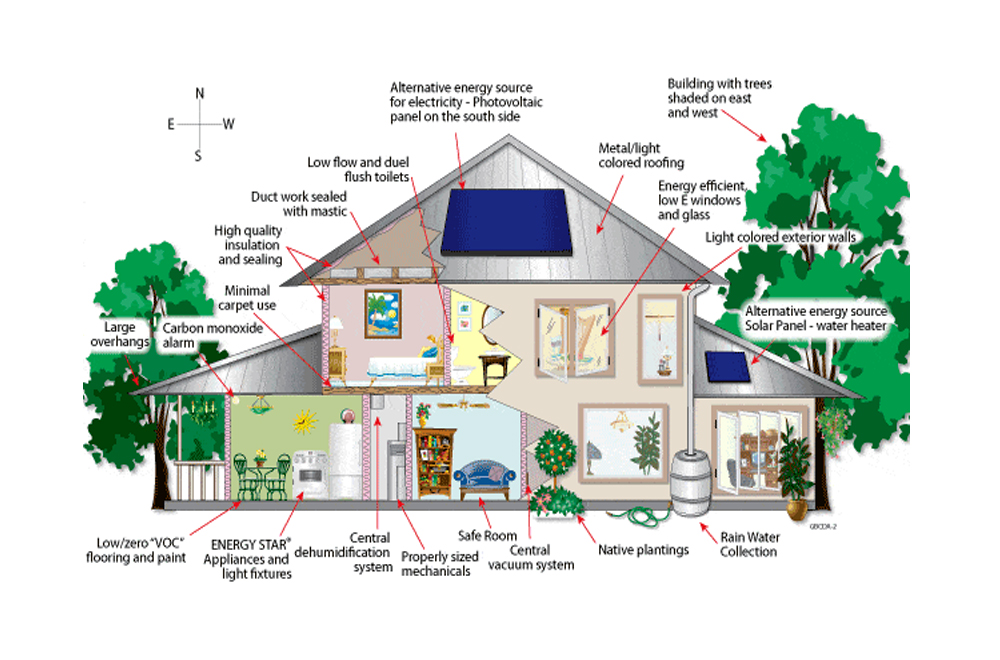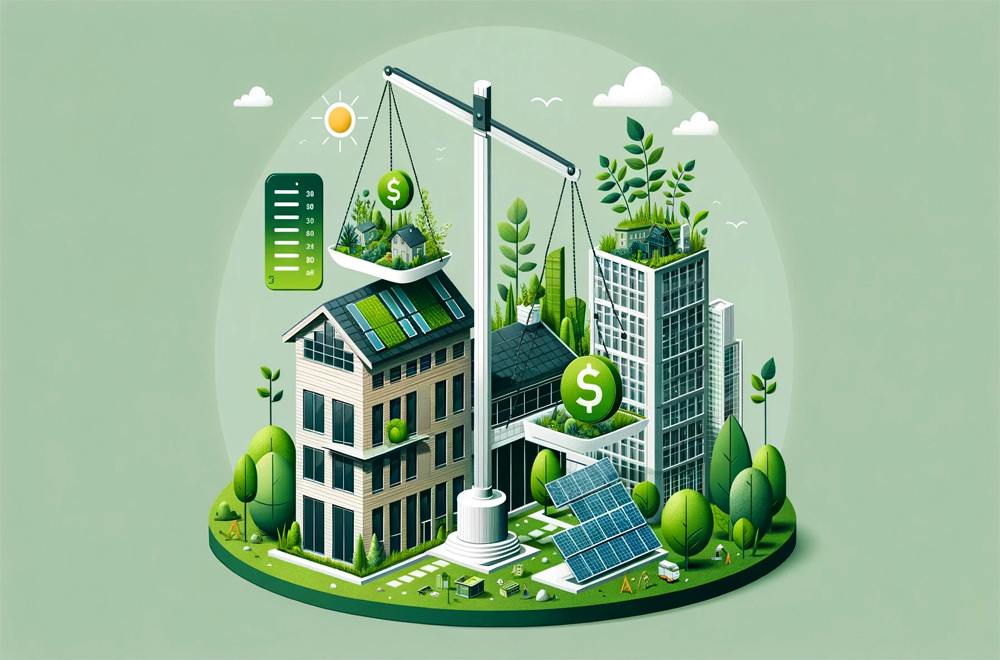If you’re planning a construction project, whether it’s a home renovation or a commercial building, you know that managing costs is essential. Construction projects can quickly spiral out of budget if not handled with care. So, how can you reduce construction costs without compromising on quality? This article will discuss some practical tips and strategies to help you save money and make your construction project a success.
Whether you’re a seasoned contractor or a first-time homeowner overseeing your dream project, understanding the importance of cost reduction in construction and the key strategies to achieve it is crucial.
Table of Contents
ToggleThe Importance of Cost Reduction in Construction
Construction is an industry where every dollar saved can translate into a more efficient project, better quality outcomes, and potentially higher profits. It’s not just about pinching pennies; it’s about optimizing resources, making intelligent choices, and ensuring your construction project stays within budget without compromising quality or safety.
A well-managed cost reduction strategy can help you:
- Complete your project on time and within budget.
- Enhance the overall quality and durability of your construction.
- Increase your profit margins, whether you’re a contractor or a homeowner.
- Stay competitive in the market by offering cost-effective solutions to clients.
Overview of Key Strategies
Now, let’s take a sneak peek at the key strategies we’ll be exploring in this article:
- Effective Planning for Cost Reduction: We’ll dive into the crucial role of proper planning and budgeting in construction. This includes identifying all expected expenses, creating accurate budgets, and understanding how these factors can influence the success of your project.
- Cost-Effective Material Selection: We’ll explore how to research and select materials that save you money and contribute to the long-term sustainability and quality of your construction.
- Efficient Resource Management: Learn how to minimize waste in construction through sustainable practices and energy-efficient techniques. We’ll also discuss the benefits of reusing and recycling materials and how to donate excess construction materials to benefit the community.
- Optimizing Construction Processes: Discover the importance of effective communication, flexibility, and time management in construction projects. We’ll also touch on safety compliance and how it contributes to cost reduction.
By the end of this article, you’ll have a comprehensive understanding of these strategies and be well-equipped to embark on your construction journey with a clear focus on reducing costs without compromising quality. So, let’s dive into the world of cost-effective construction practices!
Effective Planning for Cost Reduction
Successful projects are built on a solid foundation of effective planning in construction. When it comes to reducing construction costs, it all begins with meticulous preparation and budgeting. In this section, we’ll explore the essential strategies underpinning effective planning for cost reduction.
Plan Ahead and Budget Accordingly
Identifying Expected Expenses
Before the first brick is laid, it’s imperative to have a clear understanding of your project’s financial landscape. Identifying expected expenses is the first step in this process. Here’s how you can do it:
- Comprehensive Expense List: Begin by compiling a detailed list of all anticipated costs. This includes materials, labor costs, permits, equipment rental, and other expenses specific to your project.
- Research and Quotes: Seek out multiple quotes and conduct a thorough investigation to ensure you have accurate cost estimates. Remember to account for unforeseen expenses that may arise during construction.
- Contingency Fund: Always set aside a contingency fund for unexpected costs. It’s a safety net that can prevent budget overruns from derailing your project.
The Role of Accurate Budgeting
Once you’ve identified your project’s expenses, the next crucial step is to create an accurate budget. Effective budgeting is the cornerstone of cost reduction in construction.
- Detailed Budget Allocation: Allocate specific amounts to each aspect of your project. This level of detail will help you keep a close eye on spending and identify potential areas for savings.
- Regular Budget Reviews: Your budget isn’t set in stone; it should be a dynamic document. Regularly review your budget to track expenses, identify variances, and make necessary adjustments.
- Prioritize Cost-Effective Choices: During the planning phase, prioritize cost-effective choices regarding materials, equipment, and construction methods. Look for opportunities to reduce costs without compromising quality.
Utilizing Technology for Planning
In the digital age, technology has revolutionized the planning process for construction projects. Embracing these advancements can be a game-changer in your quest to reduce costs.
Streamlining Project Management
- Construction Software: Invest in construction management software to streamline project planning, scheduling, and communication. These tools enable you to manage tasks more efficiently and reduce the risk of costly delays.
- Collaborative Platforms: Utilize collaborative platforms and project management tools that facilitate communication and document sharing among team members. This ensures everyone is on the same page, reducing the likelihood of misunderstandings and rework.
Technological Advancements in Construction
- Prefabrication: Explore the benefits of prefabrication, a technology-driven construction method that can save time and labor costs while improving quality.
- Building Information Modeling (BIM): BIM software allows for detailed project visualization and simulation, helping you identify potential issues before they become costly problems.
Building Strong Supplier Relationships
Your choice of suppliers can significantly impact your project’s bottom line. Building strong supplier relationships can lead to substantial cost savings.
Partnering for Cost Savings
- Bulk Purchases: Negotiate bulk purchases with suppliers to secure discounted prices per unit. However, always consider the shelf life of materials to avoid waste.
- Long-Term Partnerships: Establish long-term partnerships with reliable suppliers. This can result in better product availability, improved forecasting, and cost-effective solutions.
Supplier Evaluation
- Thorough Research: Conduct thorough research before committing to a supplier to ensure their products meet your needs and standards. Ask for references from previous clients to gauge their reliability and quality.
- Clear Communication: Maintain open and transparent communication with chosen suppliers. Discuss pricing, delivery timelines, and payment terms to establish a mutually beneficial relationship.
Effective planning and budgeting are your compass in construction cost reduction, and technology and supplier relationships are your tools. Armed with these strategies, you’re well-prepared to navigate the intricate landscape of construction expenses and steer your project toward success.
Cost-Effective Material Selection
The materials you choose for your construction project play a pivotal role not only in their quality but also in their cost. As the cost-effective material selection is a fundamental aspect of reducing construction expenses.
Using Cost-Effective Materials
Factors for Material Selection
When selecting materials for your construction project, a well-informed decision can lead to significant cost savings without compromising quality. Here are the key factors to consider:
- Durability: Opt for materials known for their longevity. Investing in durable materials may have a higher initial cost but can save you money in the long run by reducing maintenance and replacement expenses.
- Availability: Consider the availability of materials in your region. Locally sourced materials can be more cost-effective due to reduced transportation costs.
- Environmental Impact: Think about the environmental footprint of your materials. Eco-friendly and sustainable options may qualify for incentives or rebates while contributing positively to your project’s image.
- Recycled Materials: Explore the use of recycled materials. These not only reduce costs but also promote sustainability.
Exploring Recycled Options
- Recycled materials are gaining popularity in construction due to their cost-effectiveness and environmental benefits:
- Plastic Bottles and Aluminum Cans: Utilize recycled materials like plastic bottles and aluminum cans in construction. These materials are not only cost-effective but also reduce landfill waste.
- Salvaging Usable Items: Use items from demolition sites, such as bricks, tiles, windows, and doors. This cuts down on material purchasing costs and promotes resource conservation.
Bulk Purchases and Material Shelf Life
Benefits and Considerations
Making bulk purchases is a strategy that can save you money on construction material. However, it’s essential to understand both the benefits and considerations:
- Cost Savings: Bulk purchases typically come with discounted prices per unit. This can significantly reduce material costs, especially for larger projects.
- Efficiency: Buying materials in bulk ensures a steady supply, minimizing project delays due to material shortages.
- Material Shelf Life: It’s crucial to consider the shelf life of materials when making bulk purchases. Some materials have limited durability in storage, and purchasing too much can lead to waste.
- Storage Space: Bulk materials require adequate storage space. Ensure you have the necessary storage facilities to maintain the quality of materials over time.
- Just-in-Time Delivery: Consider a Just-in-Time (JIT) delivery approach where materials are delivered as needed, reducing storage requirements and the risk of material degradation.
Efficient Resource Management
Efficient resource management is a cornerstone of successful cost reduction in construction. It’s about responsible and sustainable practices that benefit your bottom line while minimizing the environmental impact. So let’s explore strategies to minimize waste, reuse materials, and contribute to a more sustainable and cost-effective construction process.
Minimizing Waste in Construction
Sustainable Resource Management
Sustainable resource management in construction reduces costs and benefits the environment. Here’s how you can achieve it:
- Resource Optimization: Efficiently manage resources to minimize waste. This includes everything from materials to labor and equipment.
- Use of Drones: Employ drones to gather precise data for site surveys, helping you plan and allocate resources more effectively.
- Building Information Modeling (BIM): Implement BIM software to enhance project visualization and planning, reducing errors and the need for rework.
Energy-Efficient Techniques
Energy efficiency not only saves money but also reduces the environmental impact of construction:
- Efficient Heating and Cooling: Utilize energy-efficient heating and cooling systems to reduce ongoing operational costs.
- LED Lighting: Incorporate LED lighting for both interior and exterior spaces. LED lights are energy-efficient and have a longer lifespan, resulting in lower maintenance costs.
Reusing and Recycling Materials
Using Recycled Materials
Recycled materials can be both eco-friendly and cost-effective. Here’s how to integrate them into your construction project:
- Plastic Bottles and Aluminum Cans: Incorporate recycled materials like plastic bottles and aluminum cans into your construction. These materials not only cut costs but also contribute to waste reduction.
- Quality Assurance: Ensure that recycled materials meet quality standards and are suitable for their intended purpose in construction.
Salvaging Usable Items
Salvaging usable items from demolition sites is a sustainable practice that can save you money.
- Bricks, Tiles, Windows, and Doors: Carefully salvage items like bricks, tiles, windows, and doors. Inspect them for quality before reuse to avoid future issues.
- Reduced Waste: Salvaging lowers material costs and minimizes waste in landfills, benefiting the environment.
Donating Excess Materials
Contributing to the Community
Donating excess construction materials can be a win-win for both your project and the community.
- Charitable Organizations: Identify local charities, schools, or building clubs that can use your excess materials. This not only helps the community but also enhances your project’s reputation.
- Positive Brand Image: Contributing to the community through material donations can create a positive brand image for your construction project.
- Minimizing waste, reusing materials, and donating excess resources save money and contribute to a more environmentally conscious and socially responsible construction process.
Optimizing Construction Processes
Optimizing construction processes by negotiating effectively with subcontractors, maintaining clear communication, managing time efficiently, and prioritizing safety compliance reduces costs. It ensures the successful and timely completion of your construction project. These strategies empower you to achieve cost savings without compromising quality or safety. Let’s explore these strategies.
Negotiating with Subcontractors
Preparing Thoroughly
Effective negotiation with subcontractors begins with thorough preparation:
- Scope of Work: Define the scope of work for your project in detail. The more precise your requirements, the more accurate subcontractor bids will be.
- Budget Review: Review your project budget to understand your financial constraints. This will help you negotiate within your budgetary limits.
- Legal Framework: Familiarize yourself with the legal aspects of contracting. You must understand the terms and conditions included in your subcontractor agreements.
Researching Subcontractors
Selecting the right subcontractor is crucial for cost-effective construction:
- Experience and Reputation: Research potential subcontractors’ experience, reputation, and track record. Seek references from their previous clients to gauge their reliability and performance.
- Qualifications: Ensure subcontractors possess the qualifications and certifications relevant to your project. Experienced and well-qualified subcontractors are more likely to deliver quality work.
Effective Communication and Time Management
Avoiding Delays
Efficient communication and time management are essential for preventing costly construction delays:
- Clear Communication: Maintain clear and open lines of communication with all project stakeholders, including subcontractors, suppliers, and team members. Misunderstandings can lead to costly delays.
- Progress Monitoring: Implement regular progress monitoring to identify potential delays early. Address issues promptly to keep the project on schedule.
Time Management Benefits
Proper time management not only keeps your project on track but also reduces costs:
- Efficiency: Efficient time management leads to improved project efficiency. Shorter completion times result in reduced labor costs and lower financing expenses.
- Customer Satisfaction: Meeting deadlines enhances customer satisfaction and can lead to repeat business and positive referrals.
Safety and Compliance
OSHA Guidelines
Adhering to Occupational Safety and Health Administration (OSHA) guidelines is paramount to construction safety and cost control:
- Regulatory Compliance: Familiarize yourself with OSHA regulations applicable to your project. Compliance not only ensures the safety of your workforce but also prevents costly penalties.
- Safety Training: Invest in safety training for your team. Well-trained workers are less likely to cause accidents, which can lead to costly work stoppages and legal liabilities.
Maintaining Safety Protocols
- Safety Protocols: Establish and maintain strict safety protocols on your construction site. Regular safety meetings and inspections can help identify potential hazards and prevent costly accidents.
- Insurance Coverage: Ensure that your project has adequate insurance coverage to mitigate the financial impact of accidents or injuries.
Conclusion
In construction, the journey to cost reduction culminates with invaluable insights. As we wrap up our exploration of cost-saving strategies, it’s crucial to emphasize the significance of effective resource management and the importance of starting early while implementing cost-saving tips.
The Value of Effective Resource Management
Effective resource management is the golden thread that weaves through every aspect of construction cost reduction. It’s not just about minimizing waste or cutting expenses; it’s about optimizing how we allocate and utilize resources to achieve the best possible outcome. Here’s why it matters:
- Efficiency: Efficient resource management leads to streamlined processes, shorter project timelines, and reduced labor and financing costs.
- Sustainability: Sustainable resource practices save money and contribute to environmental responsibility, an increasingly critical aspect of modern construction.
- Quality Assurance: Well-managed resources enhance your construction’s overall quality and durability, ensuring your project stands the test of time.
- Competitive Edge: Effective resource management allows you to offer cost-effective solutions to clients, making you more competitive in the market.
Starting Early and Implementing Cost-Saving Tips
The journey to cost reduction begins with the first step and continues throughout the project’s lifecycle. Starting early and implementing cost-saving tips can significantly impact your project’s bottom line.
Here’s why it’s essential:
- Proactive Planning: Early planning enables you to identify and implement potential cost-saving opportunities before construction begins.
- Budget Control: By applying cost-saving tips from the outset, you establish a strong foundation for budget control, ensuring that you stay within financial limits.
- Incremental Savings: Small, consistent efforts to save costs throughout the project can accumulate into substantial savings by the end.
- Client Satisfaction: Clients appreciate cost-conscious builders who deliver value without compromising quality, enhancing your reputation and potential for repeat business.
As you embark on your construction journey, armed with the knowledge and strategies discussed in this article, remember that cost reduction is not a one-time endeavor but an ongoing commitment. The construction landscape is ever-evolving, with new technologies and practices constantly emerging to improve efficiency and reduce expenses.
By embracing the value of effective resource management, starting early, and implementing cost-saving tips, you’ll achieve financial savings and position yourself as a forward-thinking and responsible contributor to the construction industry. As you navigate the intricate terrain of construction costs, may your projects thrive, your clients rejoice, and your financial objectives be met with resounding success.






